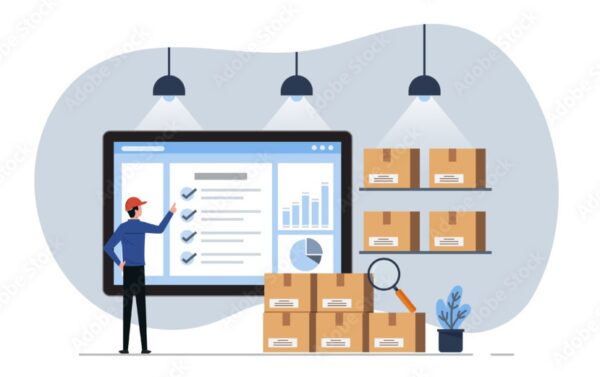Stock Management System
A Stock Management System (also known as Inventory Management System) is a software or digital solution that helps organizations efficiently manage and control their inventory or stock of goods, products, and materials. It is particularly valuable for businesses involved in retail, manufacturing, distribution, and supply chain management, as it enables them to track, monitor, and optimize their inventory operations.

Here are the key components and functionalities typically found in a Stock Management System:
Inventory Tracking: Keep a real-time record of all stock items, including product descriptions, quantities, pricing, and unit measurements.
Stock Replenishment: Automatically generate purchase orders or restocking alerts when inventory levels fall below a predefined threshold, ensuring that products are reordered in a timely manner.
Inventory Valuation: Calculate the total value of the inventory based on cost, retail price, or other valuation methods, helping businesses understand the financial impact of their inventory.
Stock Location Management: Organize inventory by location within a warehouse or store, making it easier to locate and retrieve items.
Barcode Scanning: Use barcodes and scanning technology to speed up the process of receiving, picking, and shipping products.
Multi-location Support: Manage inventory across multiple warehouses or store locations, providing a centralized view of stock levels and movements.
Stock Transfers: Facilitate the transfer of inventory between different locations or departments within the organization.
Stock Adjustments: Allow for manual adjustments to inventory levels to account for damaged, lost, or stolen items.
Stock History and Audit Trails: Maintain a complete history of stock movements and transactions, enabling tracking of changes and accountability.
Reporting and Analytics: Generate reports and analytics on inventory turnover, stock aging, demand forecasting, and other key metrics to make informed decisions.
Supplier Management: Manage information related to suppliers, including contact details, lead times, and supplier performance.
Integration: Integrate with other business systems such as accounting software, point-of-sale (POS) systems, and e-commerce platforms to ensure seamless data flow.
Stock Categorization: Group inventory items into categories, brands, or product families for better organization and analysis.
User Access Control: Define user roles and permissions to restrict access to sensitive inventory data.
Mobile Accessibility: Provide mobile access to the Stock Management System for inventory management on-the-go.
Alerts and Notifications: Receive alerts for low stock, expired products, or other critical inventory events.